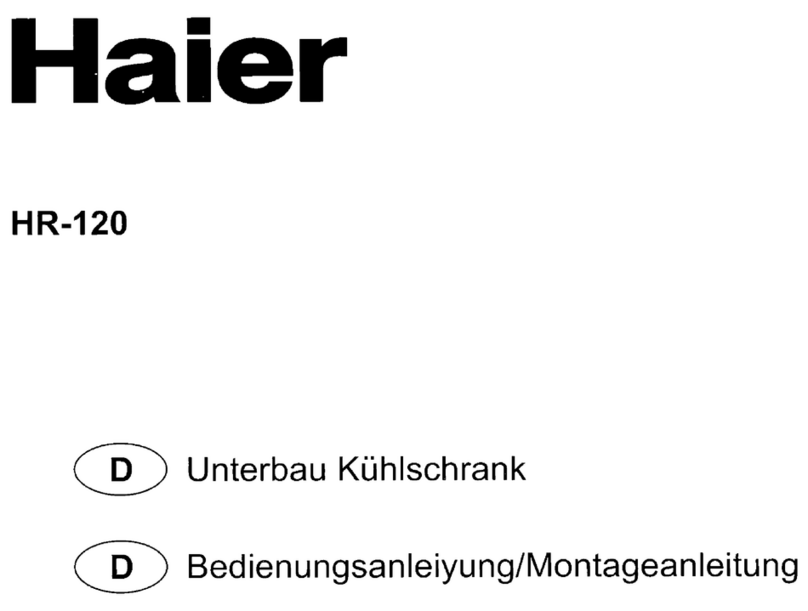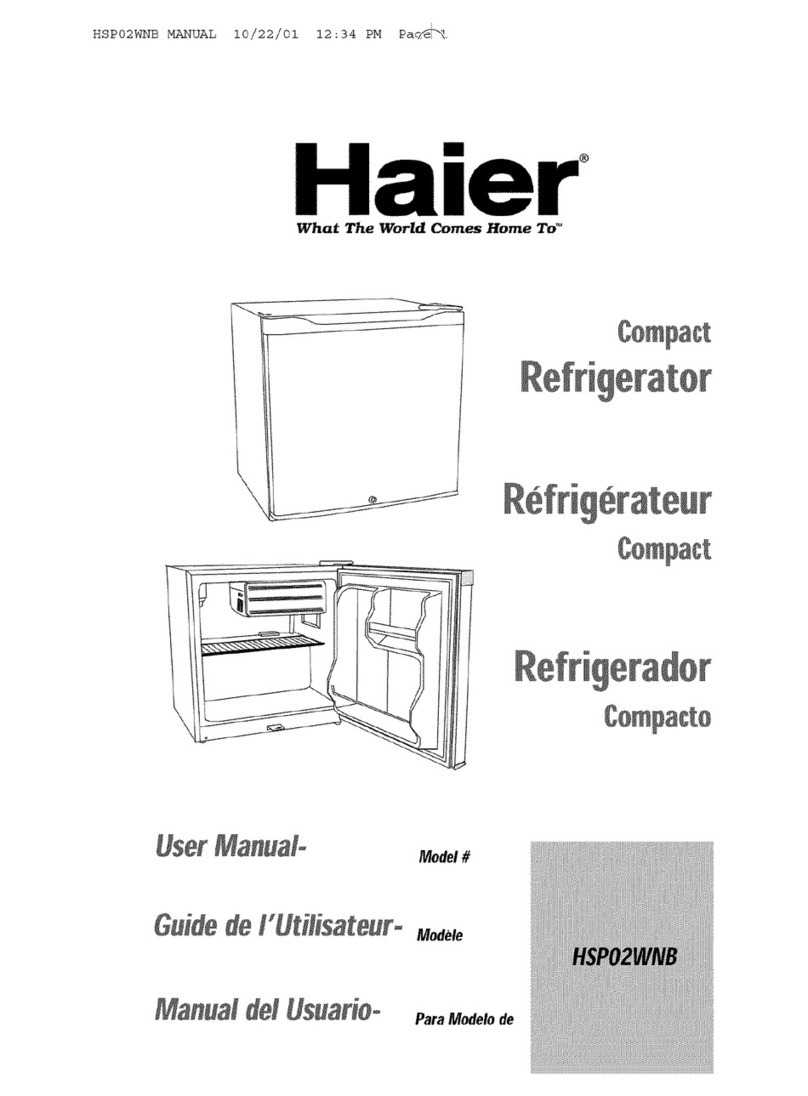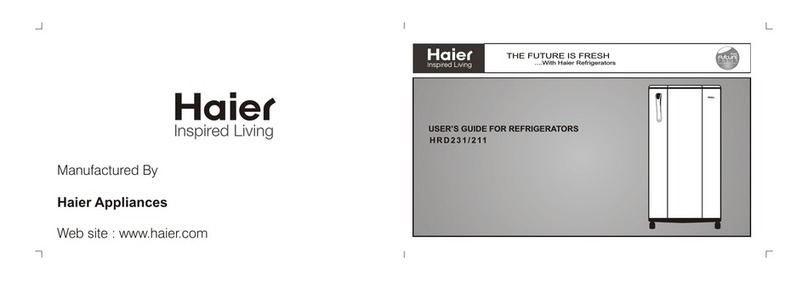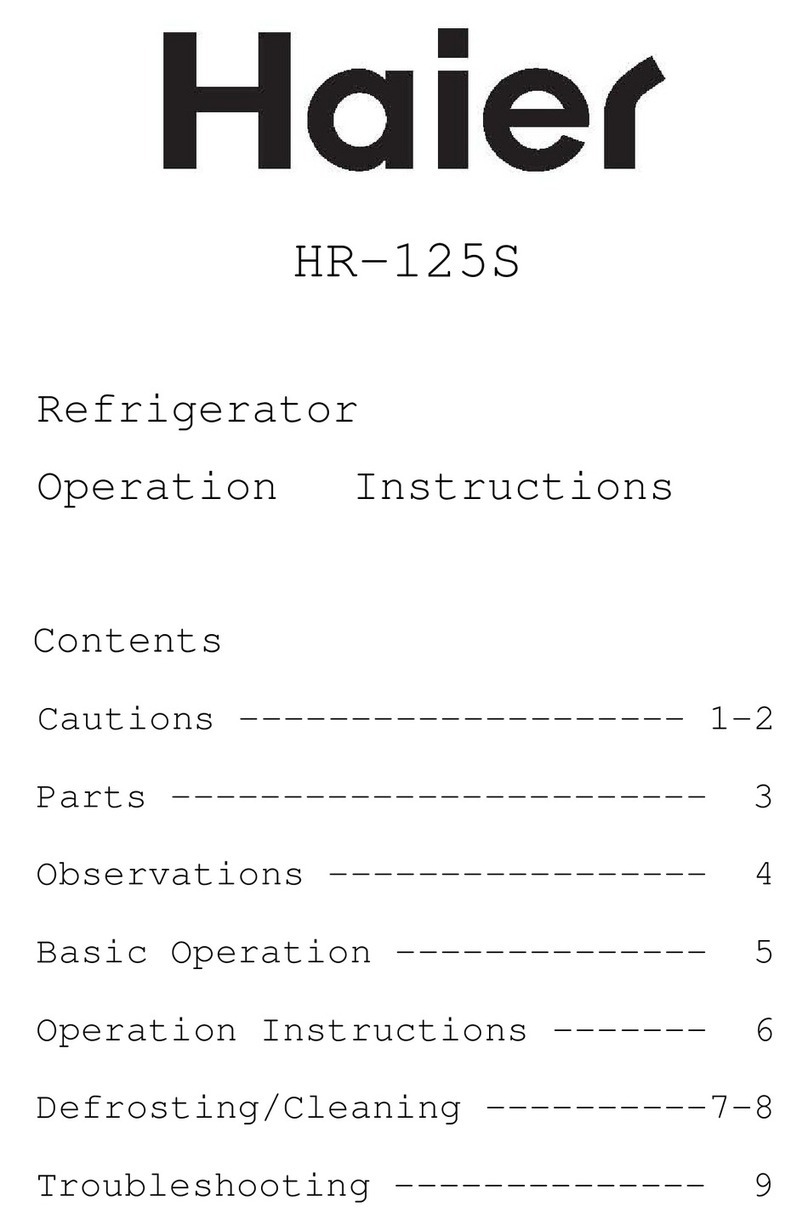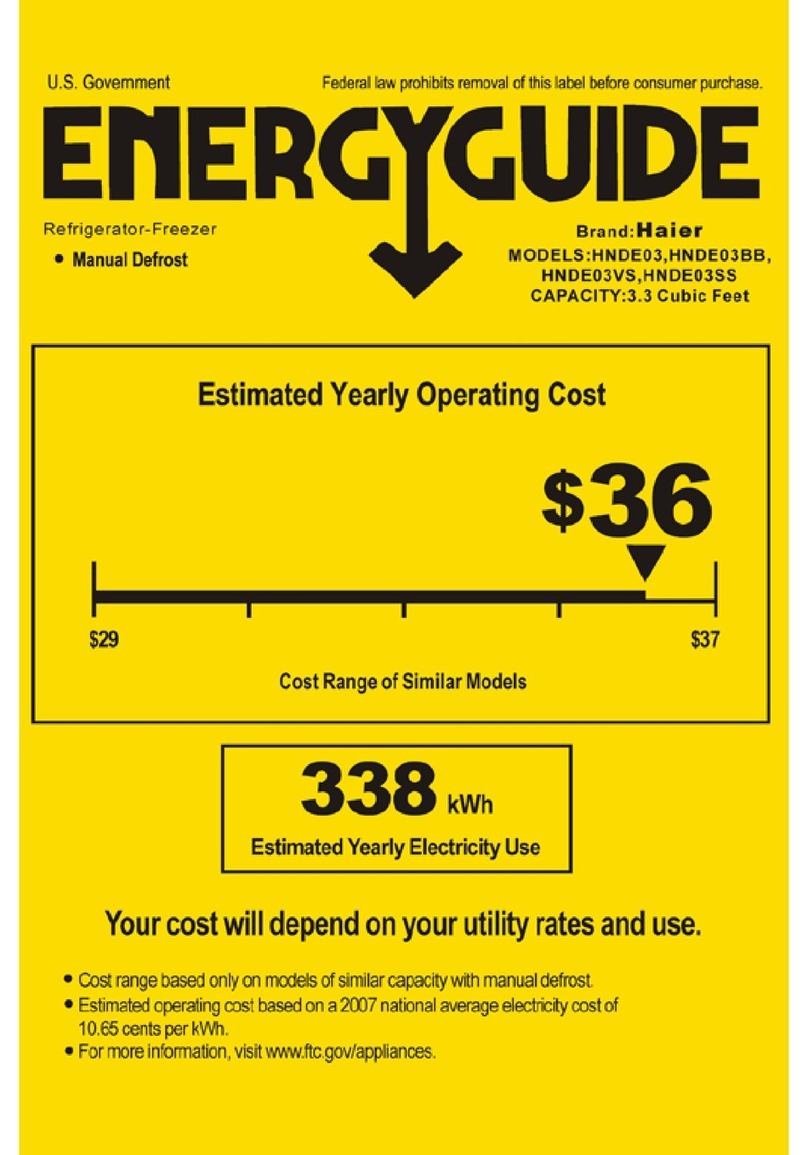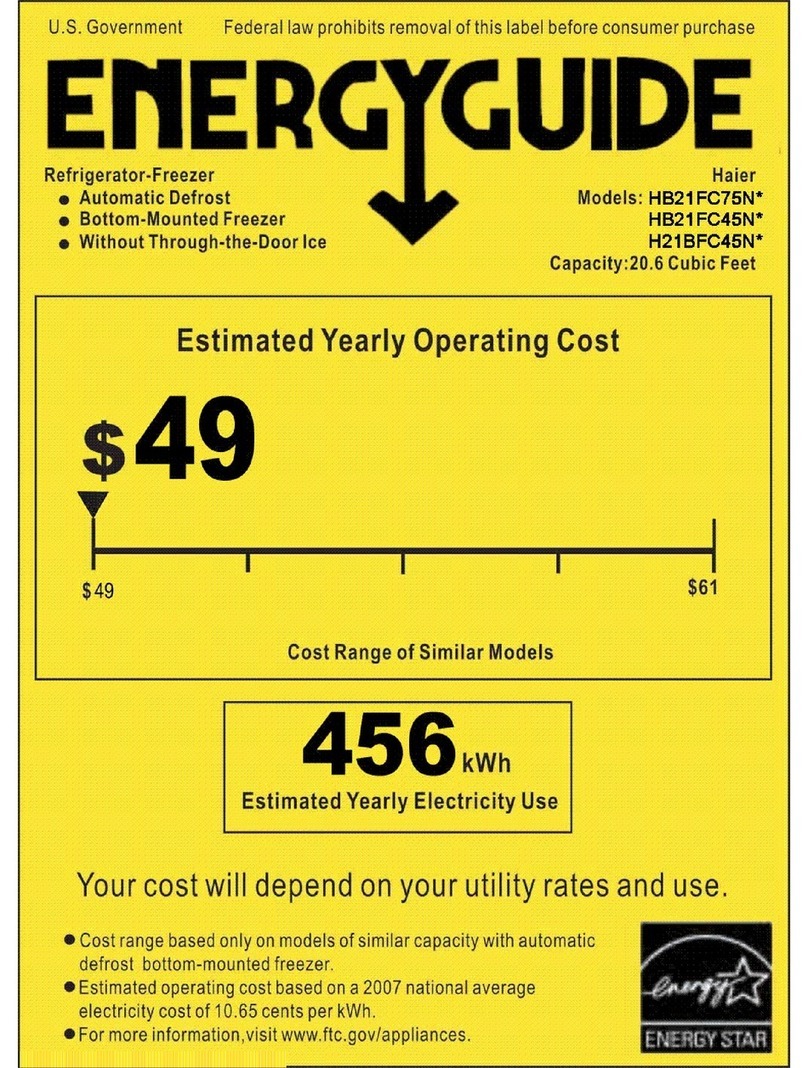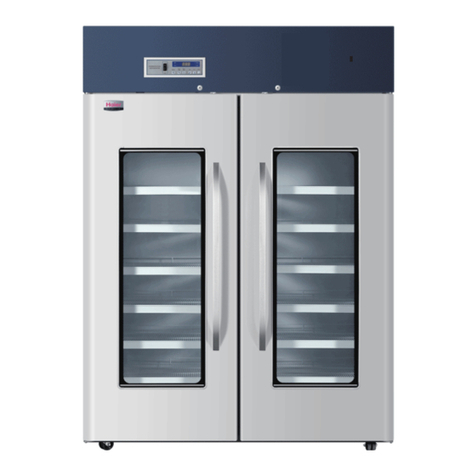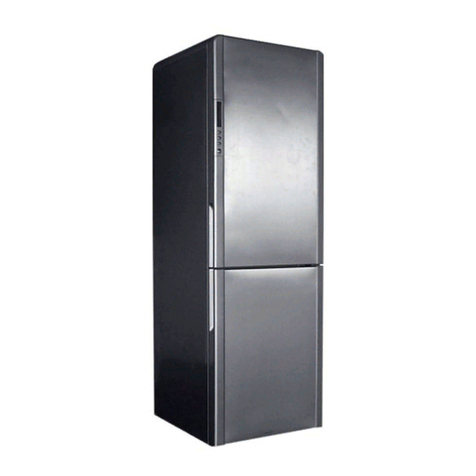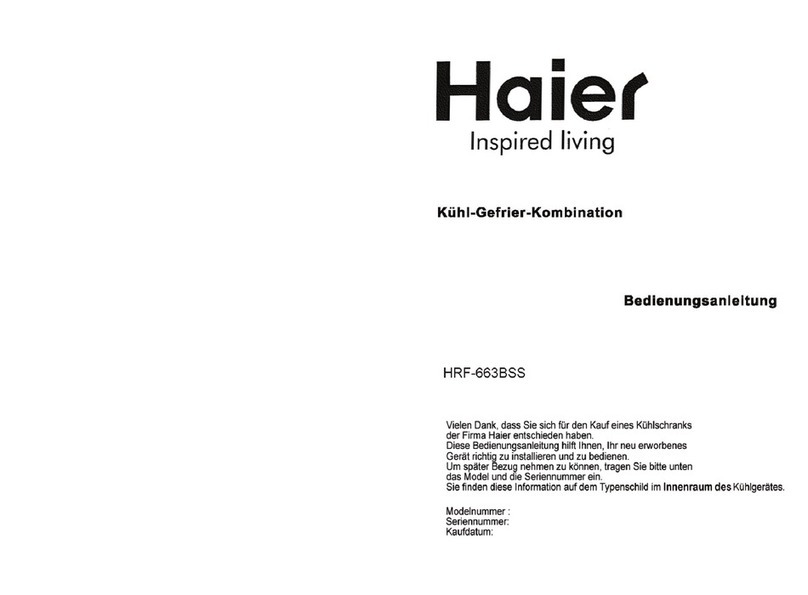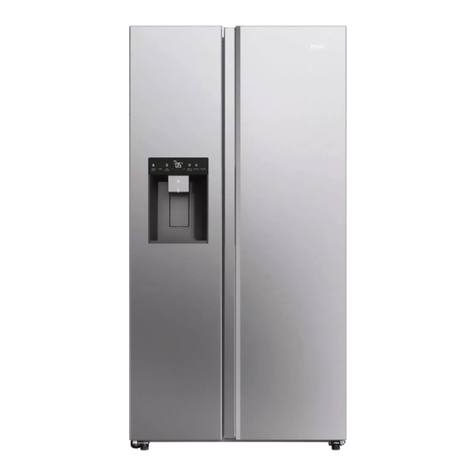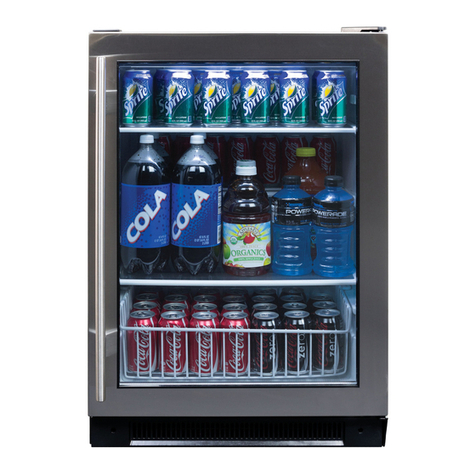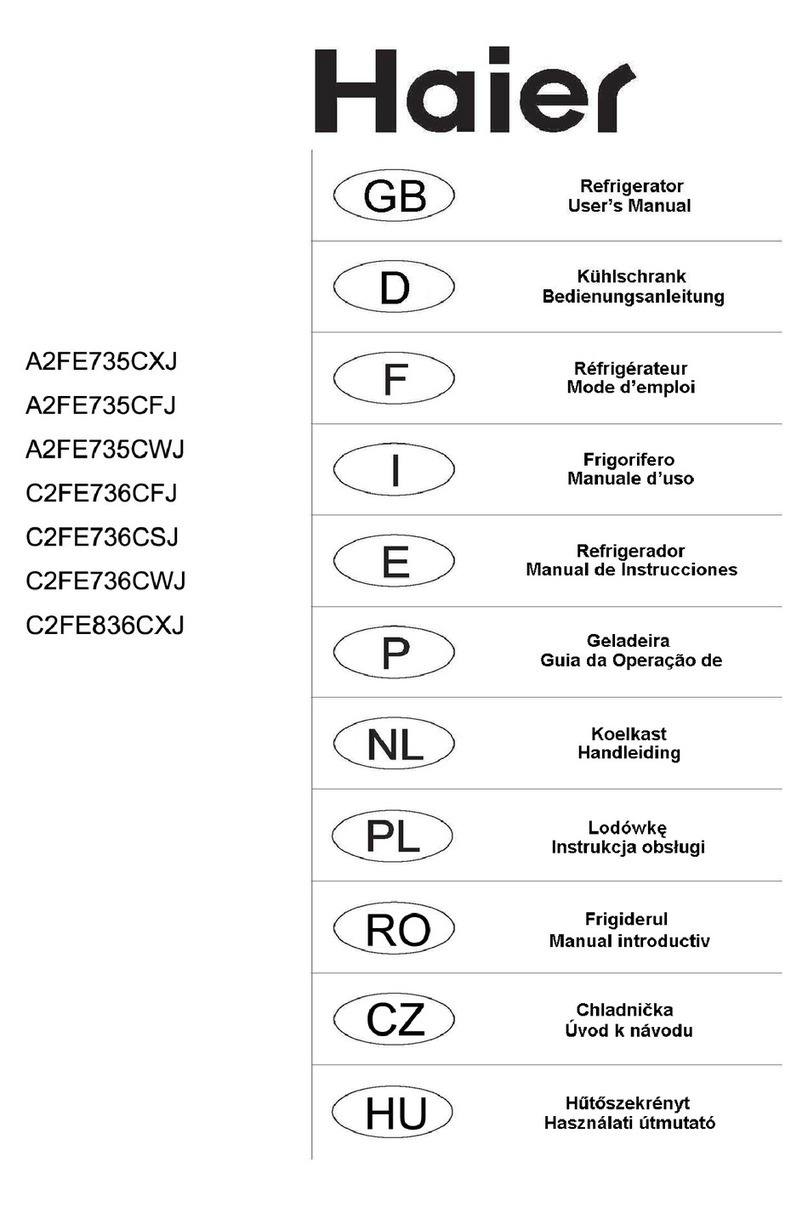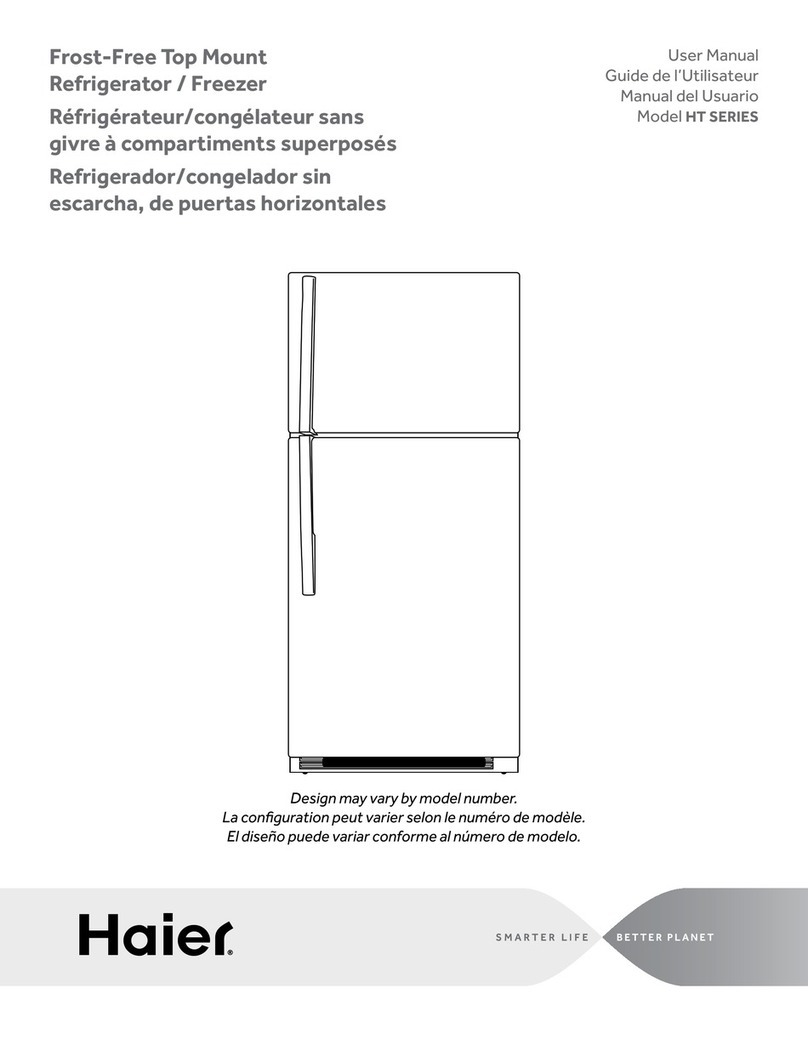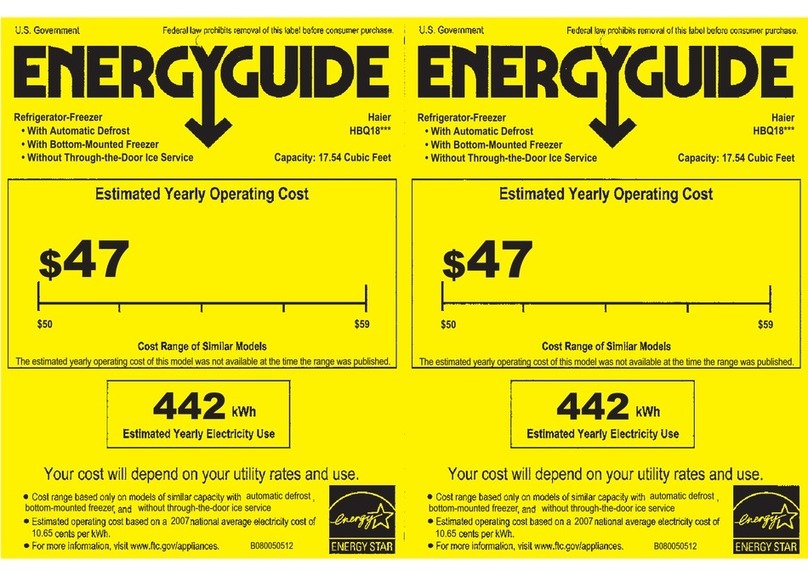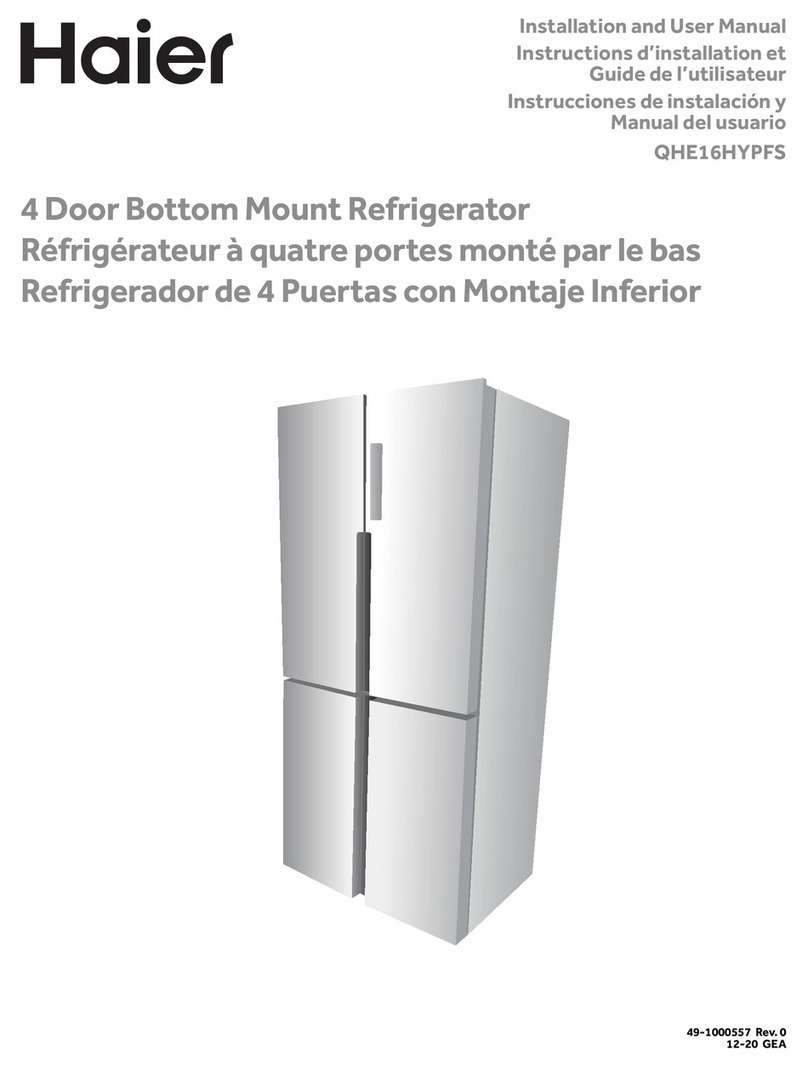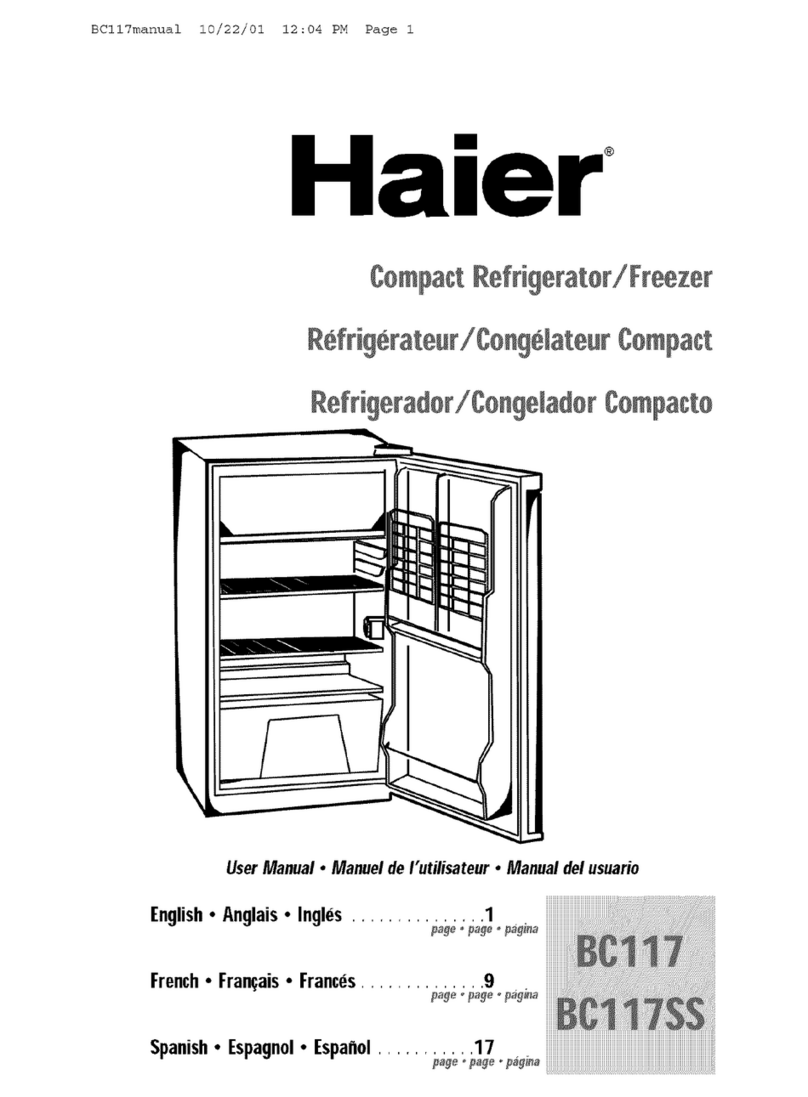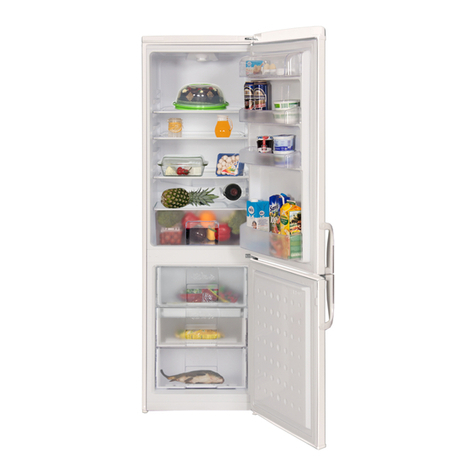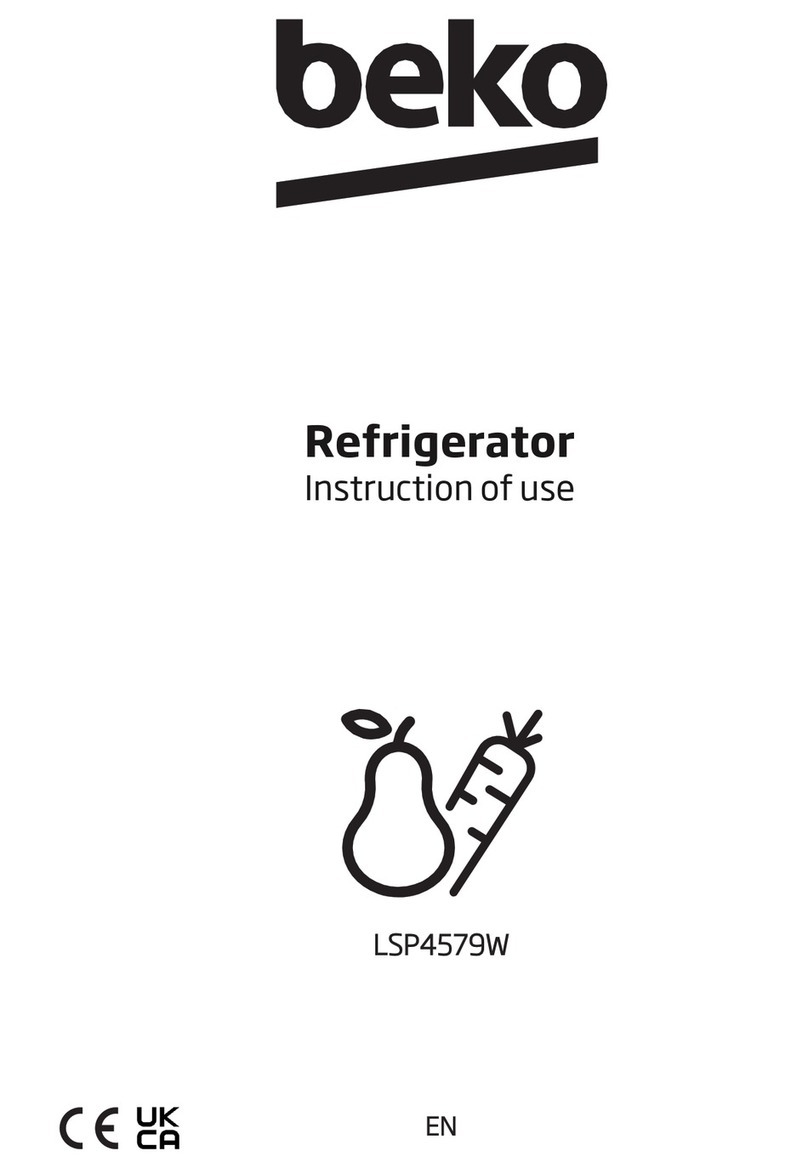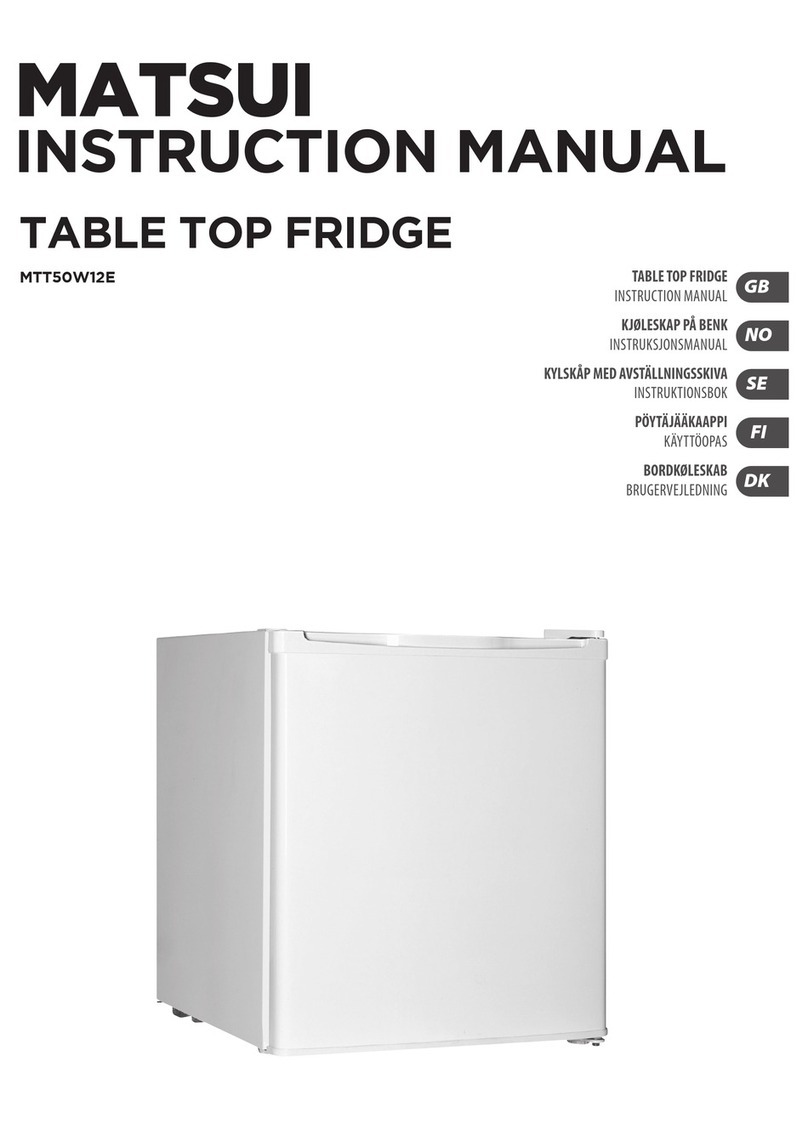
5
INSTALLATION INSTRUCTIONS
UNPACK THE REFRIGERATOR
Fire or Explosion Hazard
Do not puncture refrigerant tubing.
Follow handling instructions carefully.
Flammable refrigerant used.
Failure to do so can result in death, explosion or fire.
IMPORTANT: Handle with care when moving refrigerator to
avoid either damaging the refrigerant tubing or increasing
the risk of a leak.
Excessive Weight Hazard
Use two or more people to move and install refrigerator.
Failure to do so can result in back or other injury.
REMOVE THE PACKAGING
• Remove tape and glue residue from surfaces before
turning on the refrigerator. Rub a small amount of liquid
dish soap over the adhesive with your ngers. Rinse with
warm water and dry.
• Do not use sharp instruments, rubbing alcohol,
ammable uids, or abrasive cleaners to remove tape
or glue. These products can damage the surface of your
refrigerator. For more information, see “Refrigerator
Safety.”
• Remove foam block(s) inserted between the compressor
motor and the cabinet, as shown.
NOTE: Do not remove the plastic drain tray located
above the compressor motor on models with auto-
defrost.
b
a
a Foam Blocks
b Compressor
• Dispose of/recycle all packaging materials.
When Moving Your Refrigerator:
Your refrigerator is heavy. When moving the refrigerator
for cleaning or service, be sure to cover the oor with
cardboard or hardboard to avoid oor damage. Always
pull the refrigerator straight out when moving it. Do not
wiggle or “walk” the refrigerator when trying to move it,
as oor damage could occur.
CLEAN BEFORE USING
After you remove all of the packaging materials, clean the
inside of the refrigerator before using it. See the cleaning
instructions in “Refrigerator Care.”
Important information to know about glass shelves
and covers:
Do not clean glass shelves or covers with warm water
when they are cold. Shelves and covers may break if
exposed to sudden temperature changes or impact,
such as bumping. Tempered glass is designed to shatter
into many small, pebble-size pieces. This is normal.
Glass shelves and covers are heavy. Use both hands
when removing them to avoid dropping.
REVERSE DOOR SWING
(OPTIONAL)
If you want to reverse the door swing so that the doors open
from the opposite side see the following instructions.
IMPORTANT: The graphics referenced in the following
instructions are included later in this section. See “Reverse
Door Swing” graphic.
REMOVE THE DOORS
Excessive Weight Hazard
Use two or more people to move and install refrigerator.
Failure to do so can result in back or other injury.
1. Unplug refrigerator or disconnect power.
2. Remove all food, shelves, drawers, trays and bins from the
interior refrigerator cabinet and the door.
3. Remove tabs on both sides of the refrigerator top to
access the screws and remove the screws.
